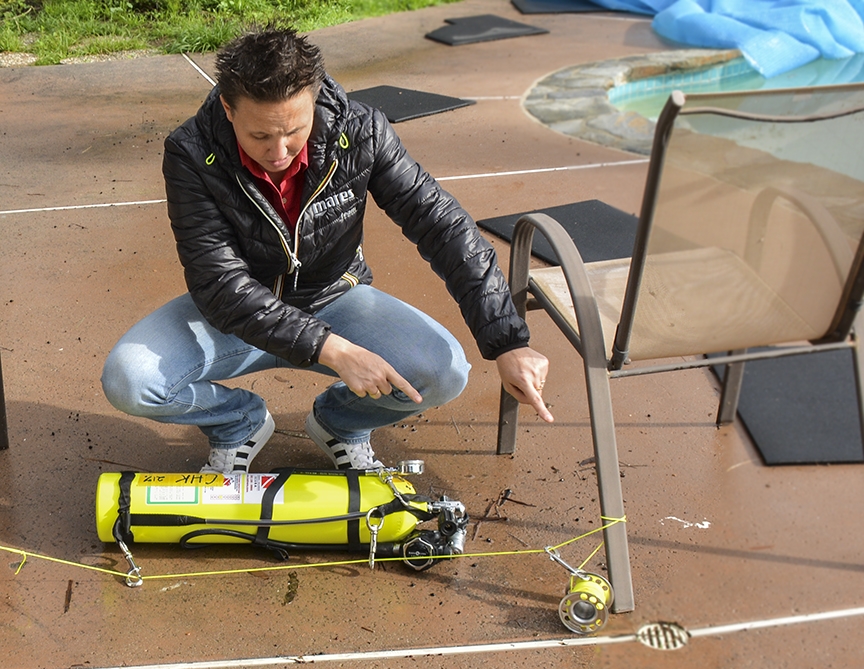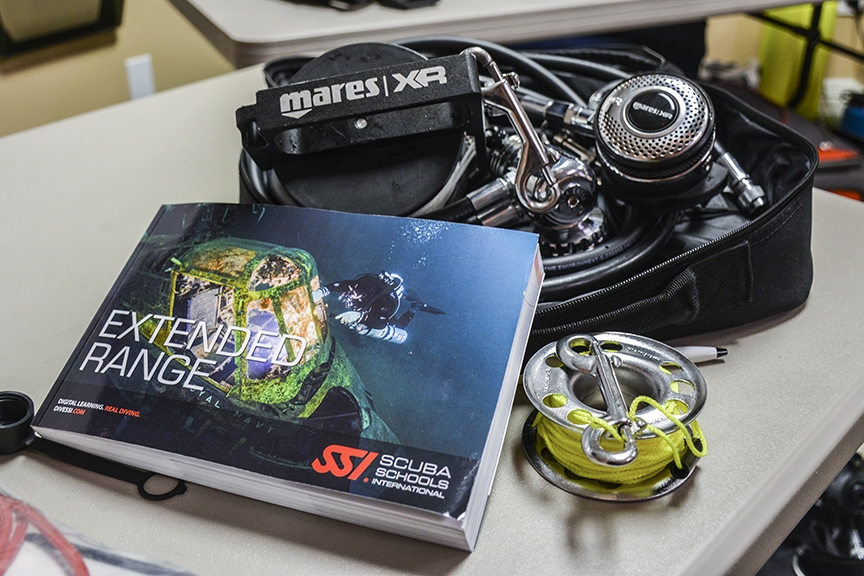Extended Range Instructor Training
February 23, 2017 Welcome to Los Angeles International, this is your captain speaking. We’re going to be sitting on the tarmac for a bit due to the fog, but we’ll get you to your gate and on your way as soon as possible."The fog is a by-product of the unusual weather that California is experiencing during one of the wettest winters on record. It’s keeping me reaching the town of Thousand Oaks, where I’ll be participating in the SSI Extended Range Nitrox Diving Instructor program. Over the course of three days, my abilities as an instructor, both in the classroom and underwater, will be developed and evaluated by a pair of XR Instructor Trainers.
After collecting my baggage and a rental car, I head north through driving rain to reach Thousand Oaks and Channel Islands Scuba, who will be hosting our training for the weekend. The evening quickly disappears in a blur of unpacking and equipment assembly. Although a dry suit isn’t required equipment for XR divers, water temperatures off the coast linger at about 55°F (12°C), and I will be teaching the program to students in Colorado, where temperatures can drop even lower.
The Extended Range Nitrox Diving program is my first step into the world of extended range diving. In contrast to the traditional view of a technical diver, who is covered in hoses, gauges, and cylinders filled with exotic breathing gases, this program can be completed by students wearing a traditional single-cylinder configuration. Students learn the skills necessary to plan a dive with no more than 15 minutes of decompression, using one stage cylinder, and planned using only the gas in their back cylinders.
Along with my dry suit, I’ve packed an Extended Range Nitrox Total Diving System. Two regulators, one rigged with a seven-foot long hose, and another with a long hose and SPG that will be used for a staged decompression cylinder, my Mares Power Plana fins (weighted to be slightly negatively buoyant – a blessing for a dry suit diver with a tendency to float his feet), and other odds and ends complete the setup.
The first day of class is entirely about the academics and training techniques used by Extended Range instructors. We cover the format of the program, the SSI Training Standards, and the academic training, which includes gas management and dive planning for extended range dives. Our afternoon is filled with an equipment configuration workshop, where our instructors explain the benefits and limitations of the various configuration options available to Extended Range Nitrox Diving students.
The California monsoon continues throughout our second day as we assemble our equipment for our in-water training session. SSI’s XR programs all require a pool/confined water training session, where we review skills like the S-Drill, which verifies that the diver’s regulators and cylinders are operating properly, and the Decompression Gas Switch, which ensures that the diver safely switches from the gas in their back-mounted cylinder to the gas in the stage cylinder slung underneath their left arm. This skill also tests my ability to maintain neutral buoyancy in shallow water with a dry suit, and put a serious dent in my personal ego.
Our third day starts well before sunrise, with a full moon burning down from a cloudless sky as we drive out to meet the boat that will be taking us to Anacapa Island for our open water training. The sun begins to rise as we motor out of the harbor, and we are escorted to the island by sea lions, dolphins hunting a bait ball near the surface, and even a couple of migrating humpback whales.
As we don our equipment, I jealousy eye the XR dry suits that our instructors effortlessly slip into as I sweat my way through the suiting up process. A pre-dive briefing covers the duties of each team member, the environmental conditions, the configuration of each team member, and the decompression plan.
Rolling off the side of the dive boat is like returning home. Splashing down through a waterfall of bubbles into the cold Pacific Ocean, memories of past dives flood into my mind. The coastal waters of California are filled with amazing kelp forests that house an incredible diversity of life, from the tiny little crabs that live their entire lives on a few blades of kelp, to the six-gilled sharks and sea lions that dart amongst the kelp holdfasts in search of prey.
We’re not here to sight-see, so we perform our S-drills and head deeper, adjusting our buoyancy and dry suit inflation for the depth and finning into the current. Once at depth, we run through a sequence of drills that test our ability to manipulate our stage cylinders with gloves on, team management during the bottom, ascent, and decompression phases of the dive. A couple of playful sea lions glide by to check our progress, and an inquisitive harbor seal gives me a critical eye as I work through the decompression gas switch exercise at our 6-meter (20-foot) stop.
The diving passes all too quickly, and we’re soon back in the classroom for a final exam and review of dive planning software programs. The SSI philosophy of "comfort through repetition" means that we initially learned how to plan dives by hand with gas planning sheets. Once we were comfortable with the theory and equations behind the planning process, we could graduate to digital software that follows the same algorithms, but makes the process much quicker, and reduces the likelihood of math errors.
As I board the plane for home, it’s hard to believe that so much has happened in such a short period. My head is filled with gas planning equations, skill demonstrations, and the constructive criticism that I can use to improve my teaching techniques for both recreational and XR training programs. I’ve only scratched the surface of what XR offers, and I can’t wait to push the abilities of both myself as an instructor, and my new students.


